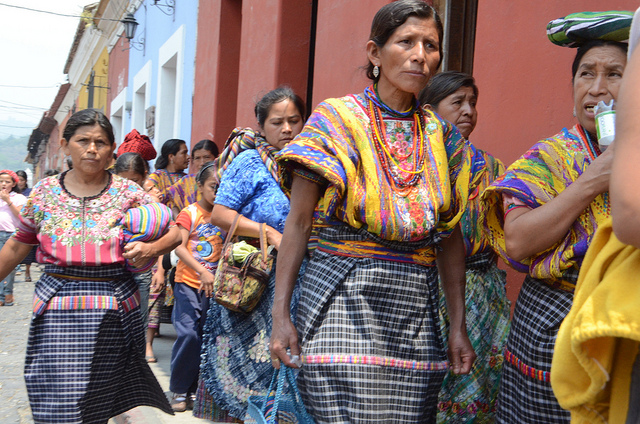“The ultimate tragedy is not the oppression and cruelty by the bad people but the silence over that by the good people.”
~ Dr. Martin Luther King, Jr.
Guatemala is a gorgeous country full of vibrant culture. Guatemala is also a country with deep-seated societal problems stemming from the fact that the indigenous Maya, whom account for over half of the population, live in poverty, oppression and inequality.
The statistics on malnutrition, hunger, poverty and domestic violence rank Guatemala as one of the worst countries in the Western hemisphere. The country endured a 36-year civil war that “officially” ended in 1996, though those numbers are egregiously misleading: the conflict began centuries ago, in the days of Spanish colonialism, and the systematic abuse and oppression of the indigenous Maya and their culture continues to this day.
In the early eighties, there were state-sponsored genocides of specific Mayan groups who were seen as a threat to the power of the oligarchy.
Hundreds of thousands of innocent people were brutally killed.
Indigenous people in Guatemala today face many challenges, including hunger and malnutrition, lack of access to medicine and birth control and a lack of basic education—much less any opportunity to develop more advanced business and entrepreneurial skills.
All of these issues are heightened when it comes to women, who have to deal with what’s known as machísmo, the chauvinistic culture that gives power and value to men and boys over women and girls.
Rural indigenous Mayan women in Guatemala rank at the bottom of almost every statistical measurement of human development. Only 14 percent complete the sixth grade, and more than half of Mayan women are illiterate, oppressed and living in poverty.
Many start having children well before they, themselves, are mature adults.
Yet, in my experience, most of these folks are genuinely kind, jovial and friendly. Even when they are walking uphill carrying a huge load of firewood on their backs.
Traje (traditional Mayan dress) is typically woven on a loom constructed with a strap around the weaver’s lower back. With the widely varied patterns and colors, the traje material can encode information about its wearer, including his or her hometown, status, history, ethnicity and language in the threaded designs. Each pueblo has its own designs and colors.
Sadly, due to globalization and a variety of complex economic, political, and societal factors, fewer modern-day Mayans are wearing—let alone weaving—their traje. Those who have moved to larger cities may feel social pressure (or may even be required by their employer) not to wear their traditional clothing. For those who still want them, textiles made on a back-strap loom aren’t cheap, especially when sold at fair-trade prices that allow for higher wages for the weavers. Obviously, for the majority of Mayan people who are living in or on the cusp of poverty, handwoven clothes are prohibitively expensive.
Certainly, lots of women and girls are still proudly donning their brilliant, handwoven huipiles and cortes around Guatemala, but due to financial struggles, more and more are wearing either machine-made traje or secondhand gringo clothes like jeans and t-shirts. Older men still wear traje in certain regions, but these days, it’s rare to see young men or boys wearing it.
In the eyes of many visitors, these contradictions make Guatemala a unique and ideal place to work, which is why it is home to a myriad of non-governmental organizations (NGOs) that work to empower the Maya people and help them break out of the poverty cycle.
One model that has become popular and successful is educating and empowering artisans, the majority of whom are women.
These talented ladies weave the tradition of their ancestors, as well as design and create new items for the modern market like backpacks, skirts, earrings and boots. The NGOs help empower the artisans by providing them with business courses and leadership training, connecting them with buyers and creating professional networks and online shops.
As global citizens and conscious consumers, we can support the empowerment of these amazing Mayan women artisans by visiting Guatemala, donating our time and money to their cause, or purchasing traditional textiles from fair-trade cooperatives that pay their members a livable wage.
Guatemala is a land of abundance and scarcity.
In this country of contradictions, it’s easy to focus on the negative and to become overwhelmed by the level of poverty (in stark contrast to the wealth of rich Guatemalans and the relatively rich tourists who flock there each year).
Yet, it’s much more productive and inspiring to look at the good news, explore, support and volunteer for innovative programs—creating positive social change, little by little, throughout Guatemala and the world.
Love elephant and want to go steady?
Sign up for our (curated) daily and weekly newsletters!
Author: Michelle Fajkus
Editor: Emma Ruffin
Photo: David Amsler/Flickr











Read 0 comments and reply